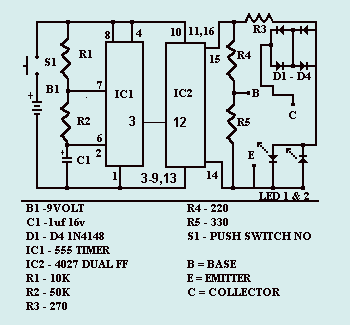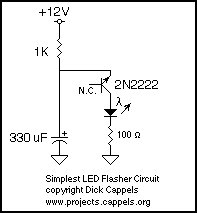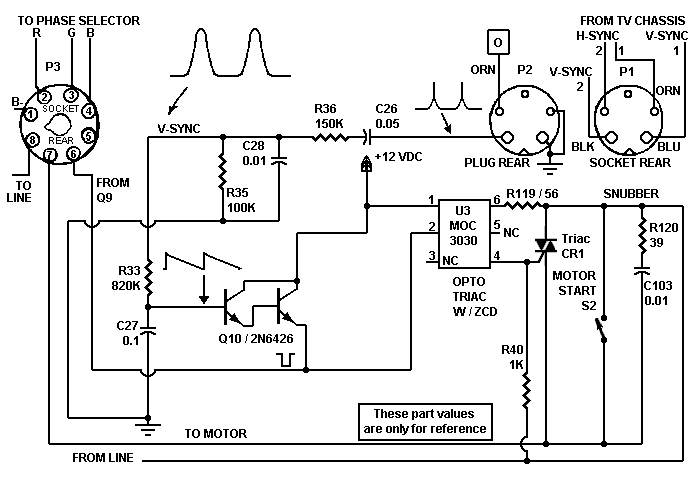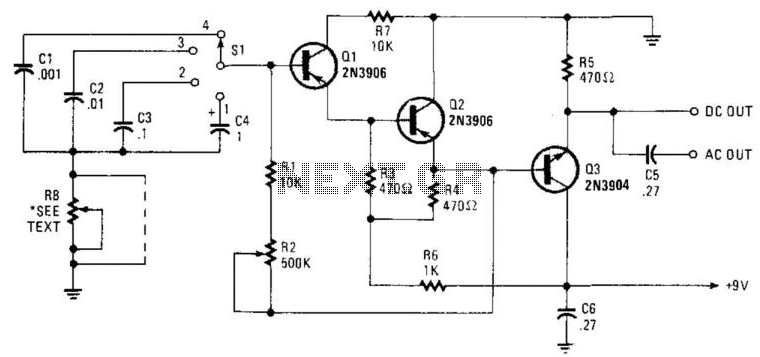
2N5003 Transistor
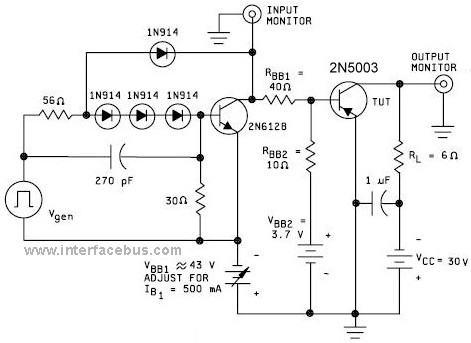
Derating is the method of reducing a device's operational limits as temperature increases, specifically concerning the device's power dissipation in relation to rising ambient temperature. Ambient temperature refers to the air temperature measured below a semiconductor device in an environment with substantially uniform temperature (still air), cooled only by natural air convection (free air), and not significantly influenced by reflective and radiant surfaces. Nearby devices that may generate heat affecting this device are not considered in any derating curve. Case mount refers to a type of package that allows for the attachment of one surface of the semiconductor device to a heat sink (heat dissipater) to manage the thermal conditions of the case temperature effectively. Attaching a device to a heat sink significantly reduces the need to derate the device due to temperature increases. The 2N5003 is a case mount package that can be bolted to a metal panel; using a conductive adhesive compound will enhance heat conduction. It is important to note that since the stud or case is isolated from the terminals, there is no requirement for an electrically conductive adhesive compound. Case temperature is defined as the temperature measured at a specific point on the case of a semiconductor device. Some temperature-power derating curves display maximum power based on ambient temperature (Ta), while others indicate maximum power based on case temperature (Tc); these two curves are distinctly different. The curve referenced shows the maximum case temperature for the 2N5003. Thermal resistance is defined as the temperature rise per unit power dissipation of a junction above the temperature of a specified external reference point under thermal equilibrium conditions. It is advisable to consult the derating curves for thermal resistance.
Derating is a crucial concept in the design and operational management of semiconductor devices, particularly in applications where temperature fluctuations are expected. The process of derating ensures that devices operate within safe limits, thereby enhancing reliability and longevity. The 2N5003, a specific case mount package, exemplifies the importance of thermal management in semiconductor applications. By connecting the device to a heat sink, the overall thermal resistance is reduced, allowing for higher operational power levels without exceeding the maximum allowable temperatures.
The ambient temperature plays a vital role in determining the operational limits of the 2N5003. In practical applications, it is essential to measure the ambient temperature accurately to ensure that the device can dissipate heat effectively. The use of still air and free air conditions must be considered during the design phase, as these factors directly influence the thermal performance of the device.
The distinction between case temperature and ambient temperature is critical when analyzing derating curves. Engineers must carefully select the appropriate curve based on the specific application and environmental conditions. The thermal resistance of the device is another key parameter that must be evaluated to understand how effectively the device can manage heat dissipation. The thermal resistance value indicates how much the junction temperature will rise for each watt of power dissipated, providing essential information for thermal design calculations.
In summary, proper understanding and application of derating principles, along with effective thermal management strategies, are essential for ensuring optimal performance and reliability of semiconductor devices such as the 2N5003 in various electronic applications.Derating is the method of decreasing a devices operational limits as temperature is increased, in this case derating a devices operational power dissipation vs increasing ambient temperature. Ambient temperature. is the air temperature measured below a semiconductor device, in an environment of substantially uniform temperature [Still-Air], cooled
only by natural air convection [Free-Air], and not materially affected by reflective and radiant surfaces. Near-by devices that may induce heat onto this device is not accounted for in any derating curve. Case mount. A type of package which provides a method of readily attaching one surface of the semiconductor device to a heat sink [heat dissipater] to achieve thermal management of the case temperature.
Attaching a device to a heat sink greatly reduces the requirement to derate the device over temperature. The 2N5003 is a case mount package which could be bolted to a metal panel, a Conductive Adhesive Compound will greatly effect heat conduction.
Design note; because the stud or case is isolated from the terminals there is no need for an Electrically Conductive Adhesive Compound. Case temperature. is that temperature measured at a specified point on the case of a semiconductor device. Some Temperature-Power derating curves show maximum power by ambient temperature [Ta] while some show maximum power by case temperature [Tc], the two curves are entirely different.
Note that the curve above shows the maximum 2N5003 case temperature. Thermal resistance. Thermal resistance is the temperature rise, per unit power dissipation, of a junction above the temperature of a stated external reference point under conditions of thermal equilibrium. Check the derating curves for Thermal resistance. 🔗 External reference
Derating is a crucial concept in the design and operational management of semiconductor devices, particularly in applications where temperature fluctuations are expected. The process of derating ensures that devices operate within safe limits, thereby enhancing reliability and longevity. The 2N5003, a specific case mount package, exemplifies the importance of thermal management in semiconductor applications. By connecting the device to a heat sink, the overall thermal resistance is reduced, allowing for higher operational power levels without exceeding the maximum allowable temperatures.
The ambient temperature plays a vital role in determining the operational limits of the 2N5003. In practical applications, it is essential to measure the ambient temperature accurately to ensure that the device can dissipate heat effectively. The use of still air and free air conditions must be considered during the design phase, as these factors directly influence the thermal performance of the device.
The distinction between case temperature and ambient temperature is critical when analyzing derating curves. Engineers must carefully select the appropriate curve based on the specific application and environmental conditions. The thermal resistance of the device is another key parameter that must be evaluated to understand how effectively the device can manage heat dissipation. The thermal resistance value indicates how much the junction temperature will rise for each watt of power dissipated, providing essential information for thermal design calculations.
In summary, proper understanding and application of derating principles, along with effective thermal management strategies, are essential for ensuring optimal performance and reliability of semiconductor devices such as the 2N5003 in various electronic applications.Derating is the method of decreasing a devices operational limits as temperature is increased, in this case derating a devices operational power dissipation vs increasing ambient temperature. Ambient temperature. is the air temperature measured below a semiconductor device, in an environment of substantially uniform temperature [Still-Air], cooled
only by natural air convection [Free-Air], and not materially affected by reflective and radiant surfaces. Near-by devices that may induce heat onto this device is not accounted for in any derating curve. Case mount. A type of package which provides a method of readily attaching one surface of the semiconductor device to a heat sink [heat dissipater] to achieve thermal management of the case temperature.
Attaching a device to a heat sink greatly reduces the requirement to derate the device over temperature. The 2N5003 is a case mount package which could be bolted to a metal panel, a Conductive Adhesive Compound will greatly effect heat conduction.
Design note; because the stud or case is isolated from the terminals there is no need for an Electrically Conductive Adhesive Compound. Case temperature. is that temperature measured at a specified point on the case of a semiconductor device. Some Temperature-Power derating curves show maximum power by ambient temperature [Ta] while some show maximum power by case temperature [Tc], the two curves are entirely different.
Note that the curve above shows the maximum 2N5003 case temperature. Thermal resistance. Thermal resistance is the temperature rise, per unit power dissipation, of a junction above the temperature of a stated external reference point under conditions of thermal equilibrium. Check the derating curves for Thermal resistance. 🔗 External reference
